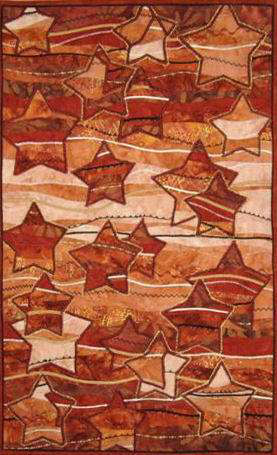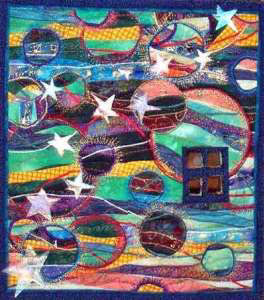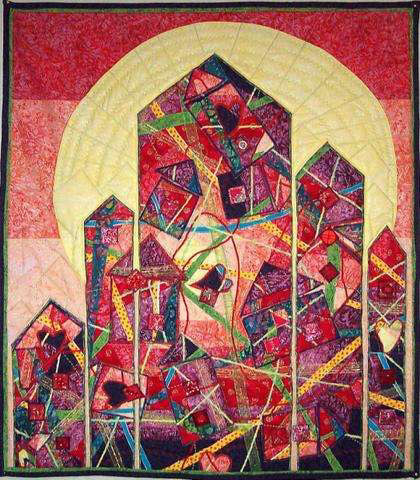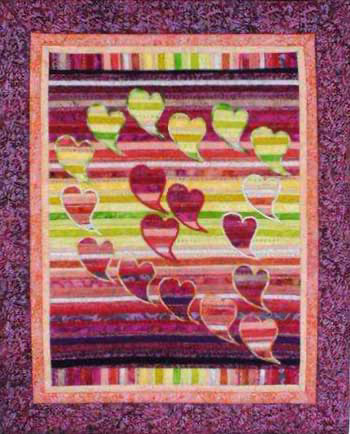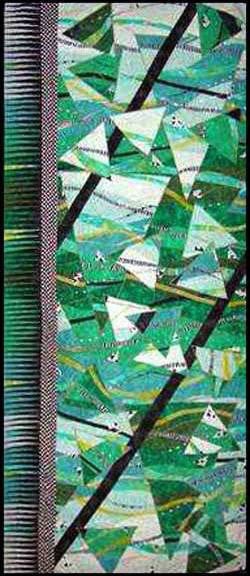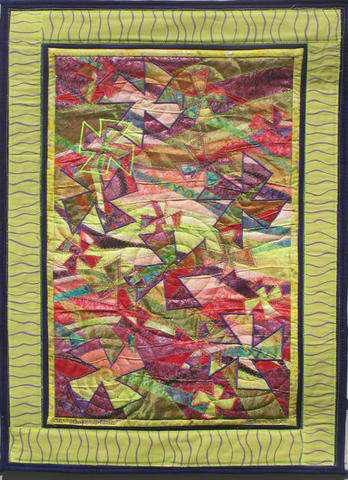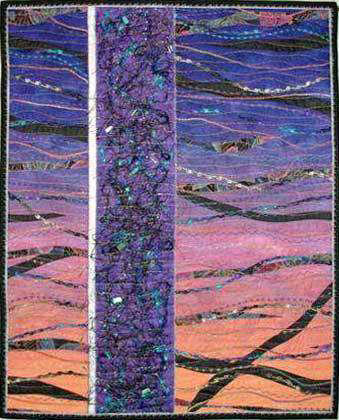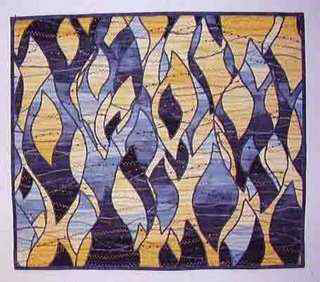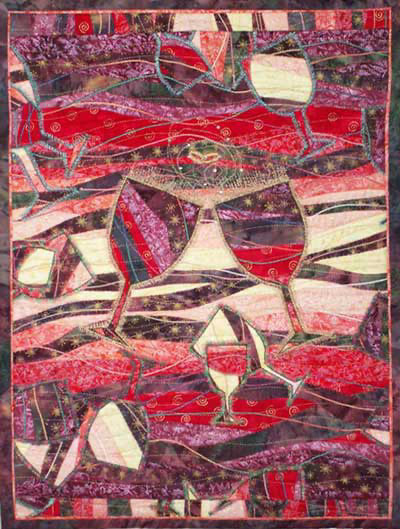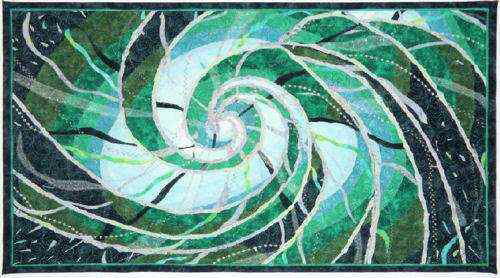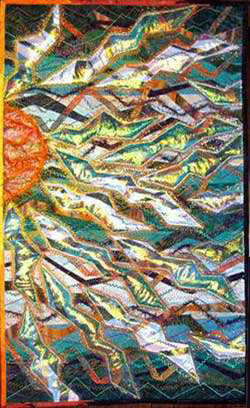Student Work from Darned Quilts
Workshop Details for Darned Quilts
In Darned Quilts, participants learn how to build and stabilize a gradation background with free-motion rotary cutting and piecing. They embellish the background with contrasting strips of fabric and a selection of ribbons, tapes, trims, embroidery, and other stitched linear effects.
From the prepared background, participants cut and shift identical shapes to create a dramatic interplay of colors. The emphasis is on value to reinforce form and depth as it defines illusory space. Participants darn cut and shifted identical shapes into their new positions to restore structural integrity to the quilt top.
Those participants who work quickly and easily will have time to layer and quilt their work. The quilting is easily-to-sew free motion work.
Darned Quilts is fun for everyone! It's particularly good for those who are willing to step out and think independently.
From the prepared background, participants cut and shift identical shapes to create a dramatic interplay of colors. The emphasis is on value to reinforce form and depth as it defines illusory space. Participants darn cut and shifted identical shapes into their new positions to restore structural integrity to the quilt top.
Those participants who work quickly and easily will have time to layer and quilt their work. The quilting is easily-to-sew free motion work.
Darned Quilts is fun for everyone! It's particularly good for those who are willing to step out and think independently.
|
|
Supply List for Darned Quilts
A gradation set or piece of fabric is required to make a Darned Quilt. Students can buy dyed gradations from any supplier (images below link to the products available from Amazon). If there's a hand-dyer near you, check there as well.
Source one set of about eight gradation fabrics, or create a set for yourself from a collection of solid or tiny print fabrics. Tiny prints that look like solids from a distance are fine to use.
Source one set of about eight gradation fabrics, or create a set for yourself from a collection of solid or tiny print fabrics. Tiny prints that look like solids from a distance are fine to use.
In the workshop, participants will construct a gradation to gain experience in seeing color and master free motion cutting and piecing. However, when time is a factor, a single piece of "ombre" fabric may be used. The effects are different and often less dramatic. The possibilities are endless!
In addition to the gradation fabrics as described above (fat quarters or quarter yards of full-width fabric for each value or color), most quilters own enough fabric and trims to make a Darned Quilt without additional shopping. Use what you have on hand instead of purchasing new products.
Apart from the gradation background described above, fabrics needed for a Darned Quilt include:
Apart from the gradation background described above, fabrics needed for a Darned Quilt include:
- 3-4 printed or patterned materials to use as embellishments. These should coordinate or contrast with the graded fabrics. They should be equal in width to the width of the quilt. They should be long enough to provide 3-6 strips cut on the cross-grain, each piece 1-3" wide, to appliqué to the quilt top.
- One piece of fabric large enough for the quilt binding
- One piece of fabric large enough for the quilt backing
- Enough scrap fabric and extra interfacing to make some practice samples as needed
- Batting of choice, 1/4" thick
- 2 yards of lightweight Pellon, Vilene, or another nonwoven fusible interfacing
- (optional) 1/2 yard of the fusing agent of choice, e.g., WonderUnder, Steam-a-Seam
- A random selection of trims, ribbons, cords, laces, and tapes, 1/4 - 1/2" wide, of different materials and textures, in colors to coordinate or contrast with the gradation fabrics
- A random selection of yarns in any fiber in colors that match or contrast with the gradation fabrics
- Regular sewing thread for piecing, quilting, and finishing the quilt in neutral, matching, or contrasting colors
- A selection of decorative threads: rayon, holographic, variegated cotton, and metallic. Colors need not match the fabrics, only to complement them.
- Quilters’ bent safety pins or straight safety pins
- Straight pins
- Quilting gloves or other favorite tools to facilitate free-motion quilting
- Circular found objects, for use as templates for cutting shapes, or a circular rotary cutter
- Sewing machine with
- regular sewing foot
- walking foot for quilting
- darning foot, Big Foot, or Little Foot for free-motion stitching
- decorative or appliqué foot for satin stitching
- (optional) cording foot for applying cords and yarns
- (optional) pintuck foot - consult your sewing machine manual for the correct size of double-needle for this foot
- Any tool that helps sew even seam allowances, such as a quilting guide attachment, a magnetic sewing guide, or a screw-on seam gauge
- Various sewing machine needles used for piecing, embellishing, and quilting. Sewing over many layers of different fabrics and trims to make a Darned Quilt may require a somewhat larger needle than usual. Basic needles include:
- regular (80/12, 90/14)
- double-needle
- embroidery
- Metallica or topstitch (14-16)
Pricing is negotiable, depending on circumstances. For more information, contact Dena.
